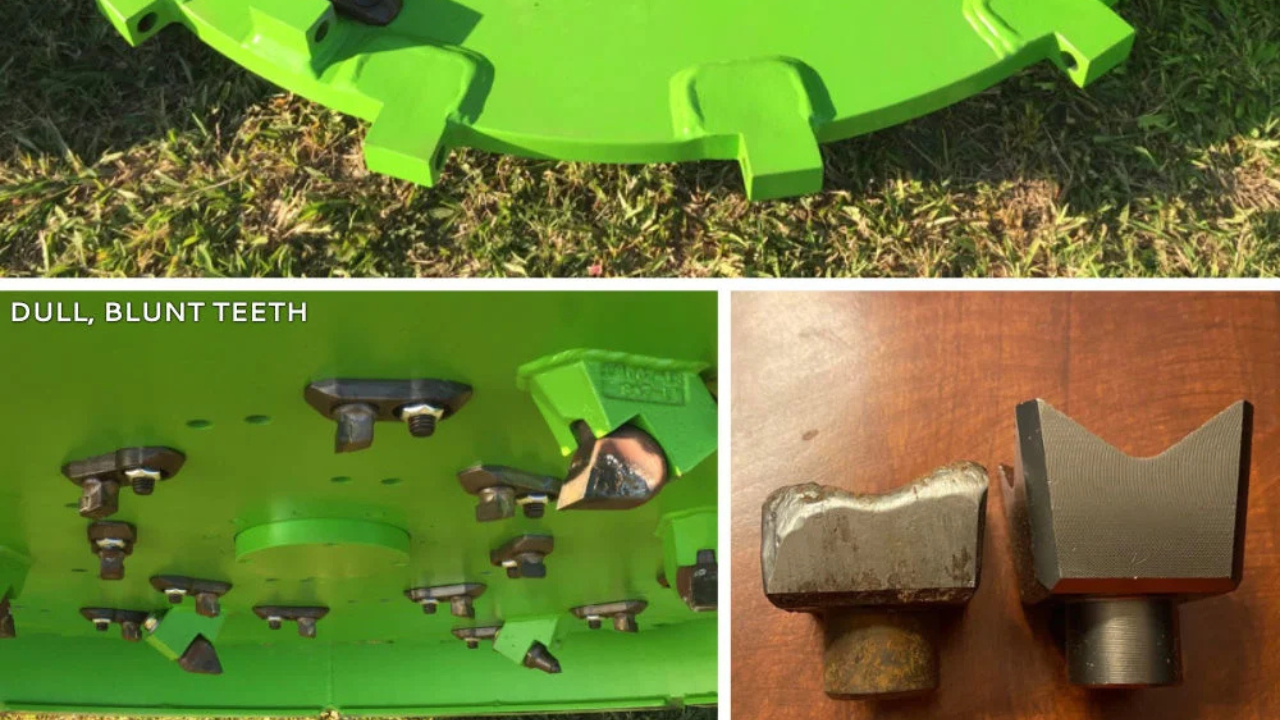Mulcher teeth function as vital elements in mulching machines, which effectively reduce trees, bushes, and vegetation into smaller pieces. Knowledge about the mh60d mulching head teeth structure, together with their operational principles and multiple types, enables operators to maximize equipment performance and extend their operational life.
What Are Mulcher Teeth?
The cutting elements of Mulcher teeth are installed onto rotating drums or discs which form part of mulching equipment. The machines operate for multiple functions that include land clearing, vegetation management, and forestry operations. The teeth operate in various design combinations and material structures that depend on operational needs and planned work conditions.
Key Features of Mulcher Teeth
- The teeth are manufactured from tungsten carbide and hardened steel alongside other durable materials.
- The tools serve to cut, shred, and grind multiple vegetation types.
- The product range includes different dimensions and forms that match the specifications of different mulching equipment.
How Do Mulcher Teeth Work?
The rotational motion of mulcher teeth operates at high speeds to produce fine mulch from vegetation. The cutting mechanism operates based on three factors: machine power, rotational speed, and the specific design of installed teeth.
Step-by-Step Functioning of Mulcher Teeth
- The mulching machine activates its power source, which starts the drum or disc rotation.
- The teeth's pointed edges make contact with trees, brush, and additional vegetation during operation.
- The rotating drum operates at high speed to produce continuous grinding action, which reduces the material into smaller pieces.
- The practiced material becomes ground-level mulch that supports soil enhancement alongside reducing erosion.
Types of Mulcher Teeth
Among the available types of mulcher teeth machines, different kinds are chosen based on how dense vegetation is and what kind of terrain exists.
Carbide-Tipped Mulcher Teeth
- The material tungsten carbide forms the basis of these teeth because it demonstrates exceptional durability.
- This equipment works effectively against hardwood, dense vegetation, and rocky terrain.
- The material demonstrates high resistance to wear and impact, which leads to extended product life.
Steel Mulcher Teeth
- Made from high-strength alloy steel.
- The teeth work well for basic mulching tasks involving grass and softwood materials.
- These teeth cost less than carbide-tipped teeth, but they have shorter operational lives.
Chisel-Type Mulcher Teeth
- Its designers created this product to precisely cut while simultaneously penetrating deeply.
- These teeth find their use in forestry operations that require precise cutting tasks.
- These teeth function effectively on soft materials and medium-hard materials.
Dual-Carbide Teeth
- The teeth incorporate two carbide layers to increase their durability.
- Ideal for extreme conditions with rocks, soil, and thick wood.
- These teeth deliver extended operational periods than typical carbide teeth do.
Benefits of Using High-Quality Mulcher Teeth
- High-quality mulcher teeth offer multiple advantages to users.
- Faster, smoother cutting and reducing operational time.
- The durability of teeth extends equipment life by protecting the drum and additional components.
- A longer product life span leads to reduced maintenance expenses because replacement operations become less frequent.
Maintenance Tips for Mulcher Teeth
- Proper maintenance of mulcher teeth requires regular inspection to achieve the best performance and operational efficiency.
- Regular checks of the teeth should be performed to detect damage or signs of wear.
- Regular sharpening of cutting edges helps preserve operational performance.
- Replace worn-out teeth before machine inefficiency occurs.
- Regular cleaning of the mulching drum should be performed to eliminate debris accumulation that could cause buildup.
Conclusion
The forestry and land-clearing industry heavily relies on mulcher teeth as fundamental operational elements. The shredding efficiency of vegetation depends on three factors: material composition, design structure, and proper maintenance. Selecting suitably designed mulcher teeth will maximize operational efficiency and extend component lifespan while minimizing long-term expenses.


